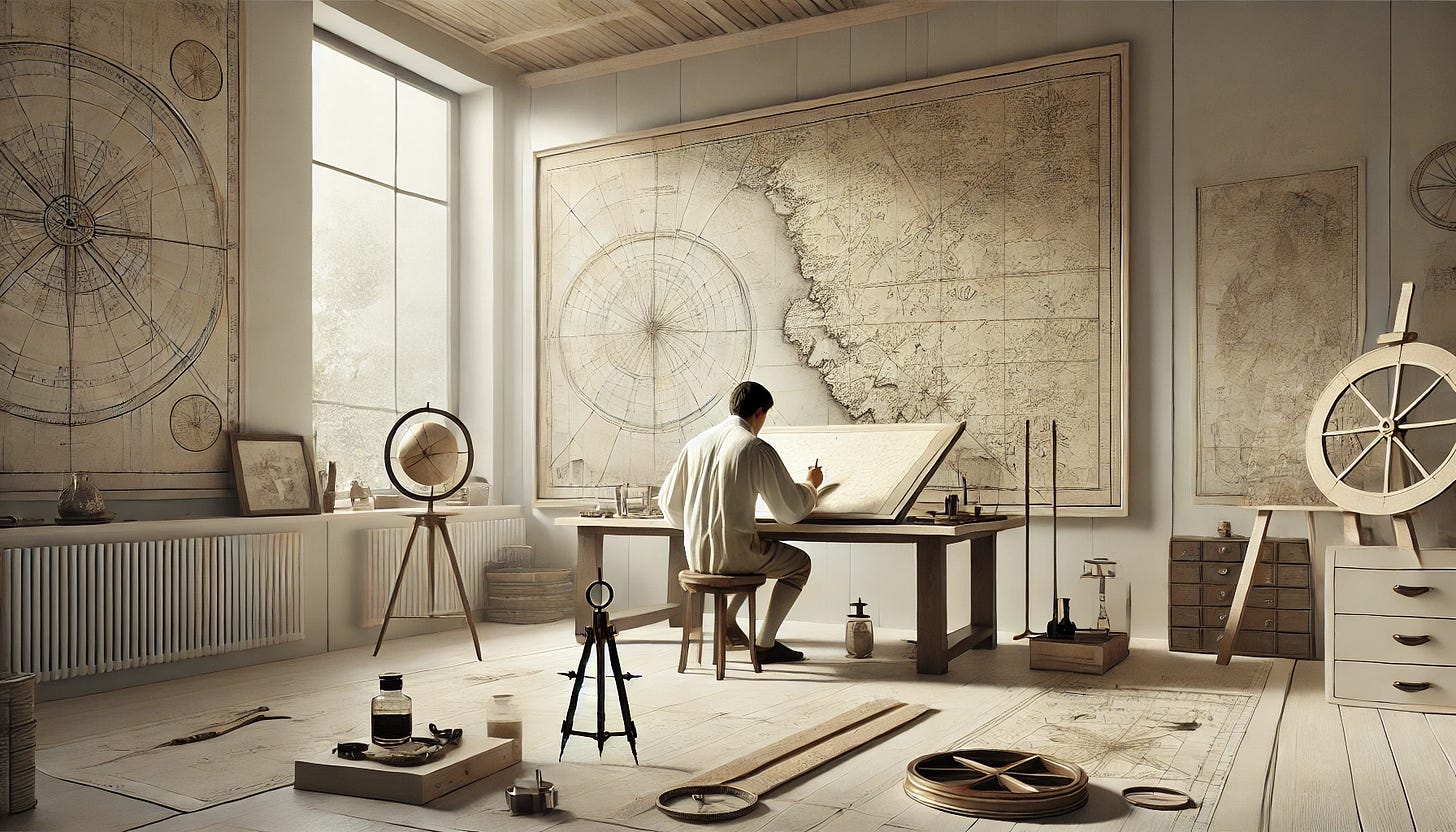Great products feel obvious in hindsight. But building one rarely is. Most products fail in predictable ways — something unexpected that product builders hadn’t thought of happens. It’s curious how often this is the outcome. Smart, industrious people fail to think things through, and end up identifying gap all too late.
I’ve recently drawn a counter-intuitive conclusion for a potential root-cause. This post is an articulation.
Collaboration is good
Working in teams is good. It brings diverse ideas to the table. A healthy collaborative environment has the right tension between engineers, designers and prodcut stakeholders and leads to great decisions.
For example, if you’re working on a new homepage experience for your product, that’s powered by AI, and has carefully designed onboarding journeys, clear bodies of work emerge:
A product stakeholder needs to identify all use-cases, articulate success criteria
A desigher needs to design the interfaces and journeys
An ML engineers needs to figure out how AI will power the landing page
A backend engineer needs to create system APIs that a frontend engineer can integrate with the UI components … and so on.
The distribution of work in this structure is necessary for quality and scale — and all in all makes sense. Discussions on user problems and brainstorming solutions together is a hallmark of great product cultures, enshrined in marquee product literature.
Devil is in the details
Problems emerge when you start tying these individual bodies of work together. The designed interface is not natively supported in the frontend component library, the backend API is not as performant as the UI design expected it to be. The AI-powered homepage isn’t working quite as well as expected, and it’s unclear how useful it would be.
Collaboration is difficult. It’s easy to work on your own thing — translating your thoughts into your craft — code, screens, or prompt. But when you have to layer your work on someone else’s, gaps emerge, because you haven’t looked at the world from your teammates’ eyes, and they haven’t looked at the world from yours.
This gap in collaboration is unfortunately an inevitable outcome of human nature. What’s controllable is its magnitude. Which brings us to the point of this post.
Collaboration needs a cartographer
Every team needs someone who looks beyond individual pieces and sees the whole. Someone who thinks about how the puzzle comes together, even when it feels like no one else has the time or incentive to do so.
Let’s call this person the cartographer. Inspired by medieval cartographers — who charted unknown territories in great detail, with limited inputs, to ensure that their mates who travel high seas find safe shores.
In the world of building products, the cartographer’s job isn’t to micromanage. It’s to map the entire system—end to end—with every journey, use case, and interaction accounted for. They’re not just asking, “Does this piece of the system work?” They’re asking, “Does this piece fit perfectly into the larger picture?”
Without this role, collaboration suffers. No one owns the seams. The designer finishes their work, confident it meets the brief, but hasn’t considered what happens when the system fails. The backend engineer builds APIs to spec, but hasn’t accounted for latency under load. The product stakeholder sets ambitious success criteria, but hasn’t thought through edge cases or trade-offs.
The cartographer connects these dots. They think about what happens when the user doesn’t follow the happy path. They anticipate failure modes. They obsess over transitions and edge cases—the unglamorous details that turn a good product into a great one.
This responsibility can’t be distributed
Here comes the counter-intuitive part. The work of the cartographer is fundamentally non-distributable. It requires a single, coherent perspective to tie everything together. Without it, teams rely on the assumption that someone is thinking about these things. But assumptions don’t ship great products.
To be clear, cartography doesn’t mean doing all the work yourself. It’s not about designing the UI, writing the API, or optimizing the AI model. It’s about making sure all of these things align. It’s about asking the uncomfortable questions no one else has asked:
• What happens when this fails?
• What happens when the user does something unexpected?
• What happens next?
The cartographer ensures no stone is left unturned. They’re the difference between a product that feels cohesive and one that feels stitched together.
Takeaways
Collaboration fails because no one owns the gaps. In a world where everyone is focused on their slice of the problem, someone has to think about the whole.
Every great product has a cartographer—someone who thought deeply about every detail, every interaction, every outcome. If your team doesn’t have one, the gaps will show.
The next time a project feels stuck or incomplete, ask yourself: Who’s mapping the whole journey? If the answer is no one, you’ve just found the missing piece.
